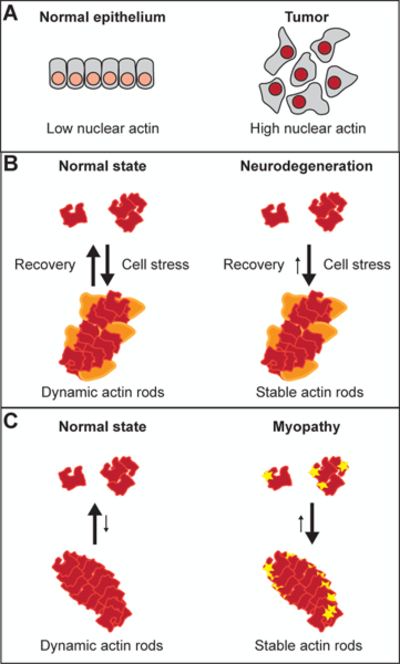Figure 4:

Nuclear actin in disease states. (A) Model for the role of nuclear actin in cancer. Extracellular cues maintain low levels of nuclear actin (light red nuclei in grey cells) in the normal epithelium. Changes in the microenvironment induce a tumor-like phenotype by increasing nuclear actin (dark red nuclei in grey cells) and thereby, causing transcriptional reprogramming (adapted from (Fiore et al., 2017)). (B) Model for the role of nuclear actin in neurodegeneration. When normal cells are stressed, nuclear actin transiently polymerizes into Cofilin-decorated rods (actin in red; Cofilin in orange). In cases of neurodegeneration, the actin/Cofilin rods are stabilized. (C) Model for the role of nuclear actin in myopathy. Under standard conditions, nuclear actin rod formation is limited. However, mutations in actin (yellow star on red actin) promotes polymerization and stabilization of nuclear actin rods. For simplicity, individual actin filaments are shown to represent nuclear actin rods, but rods may be composed of bundles of actin filaments.
